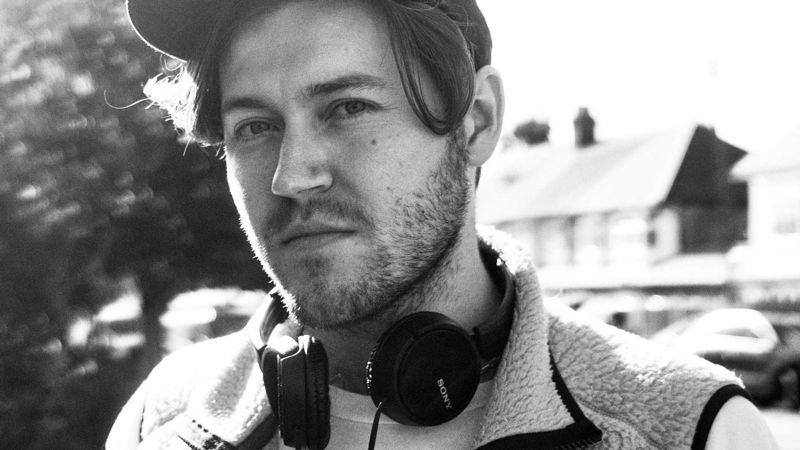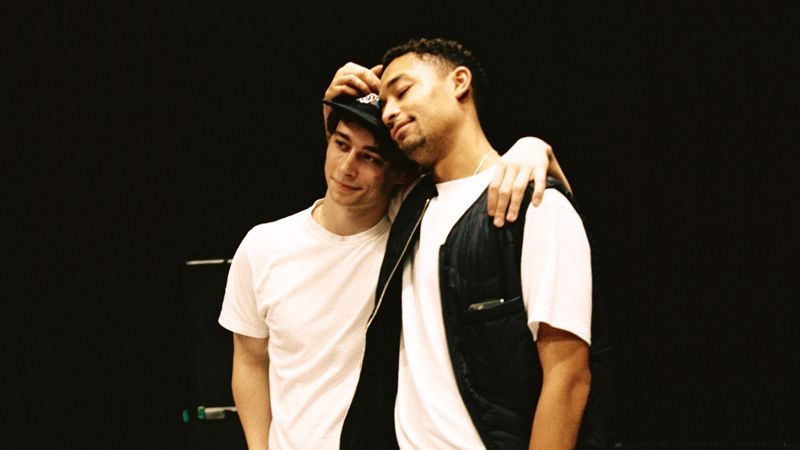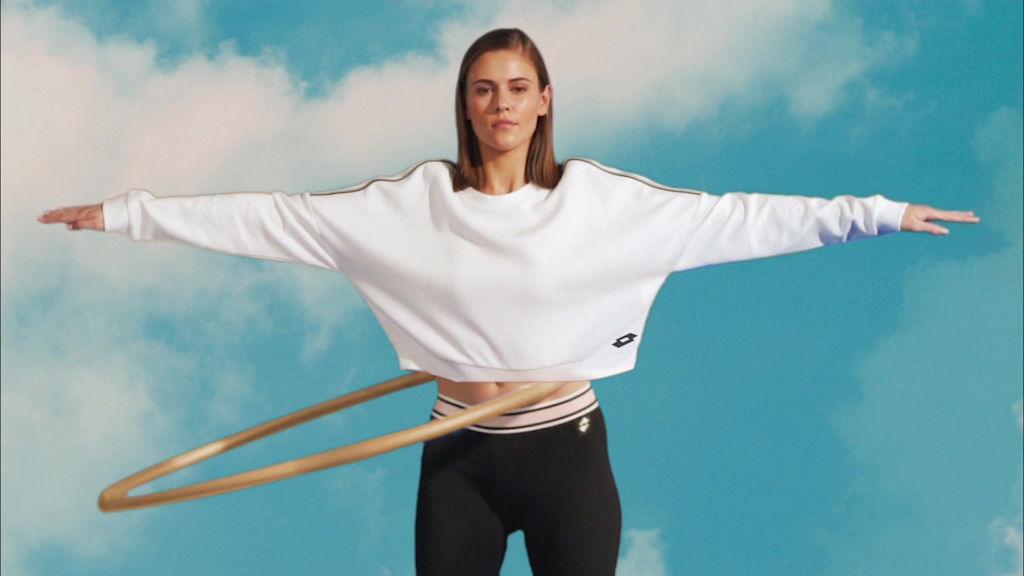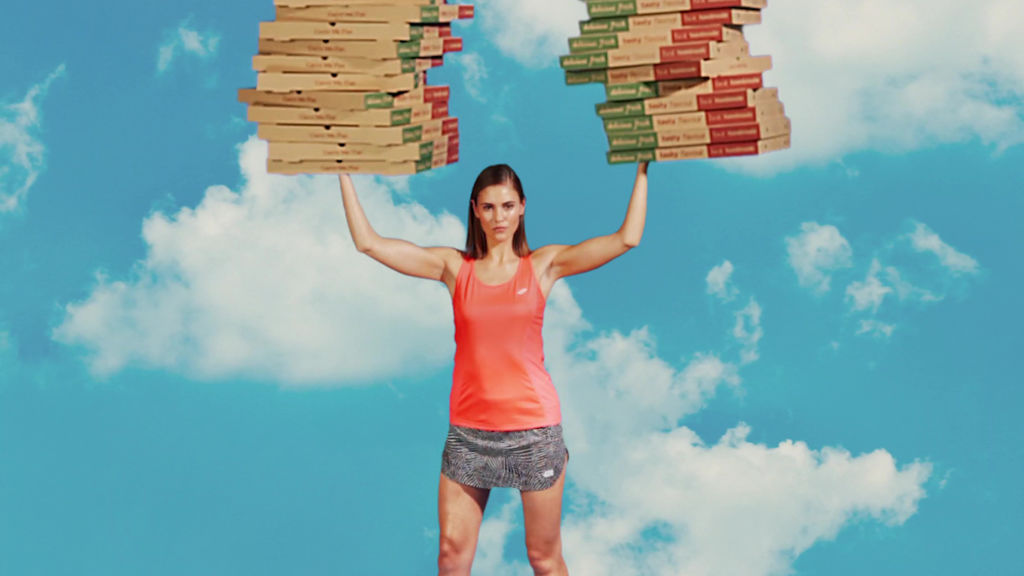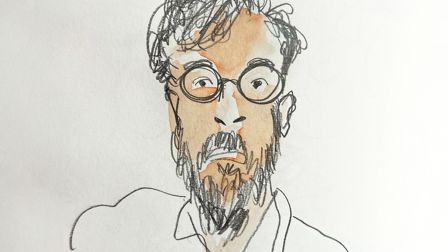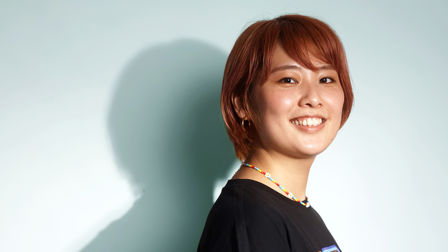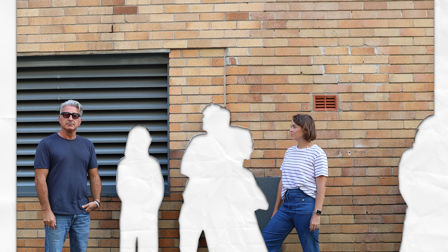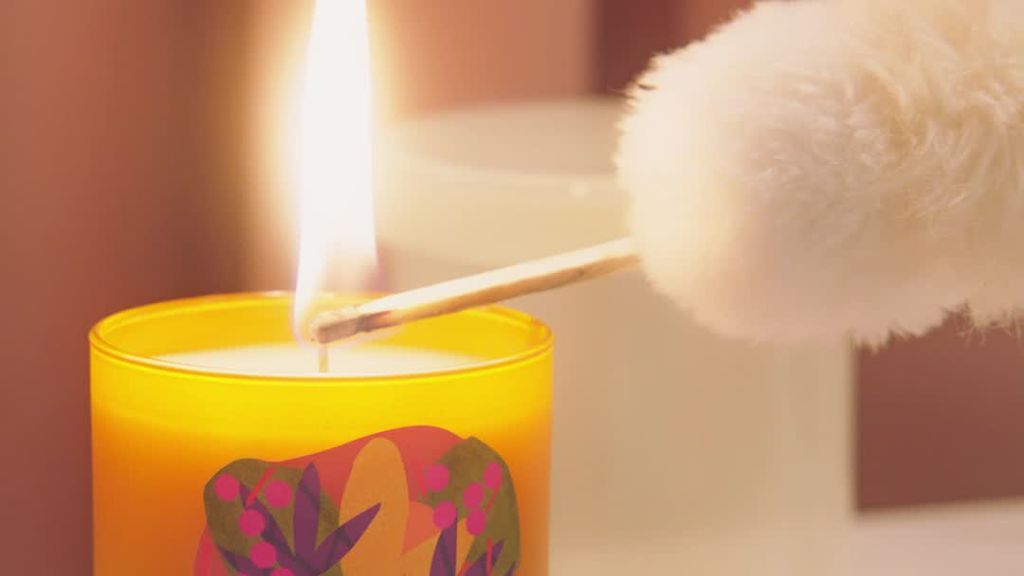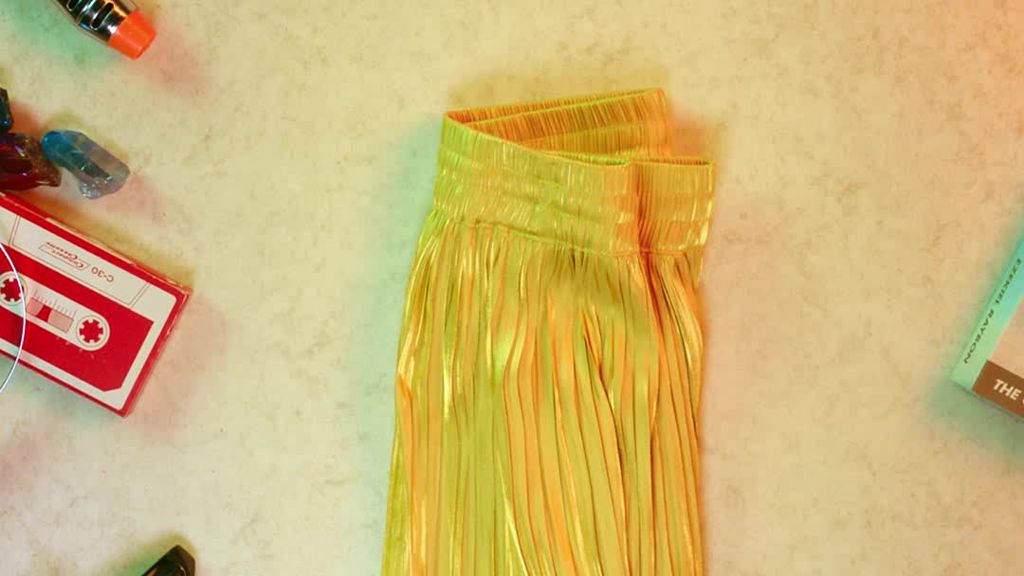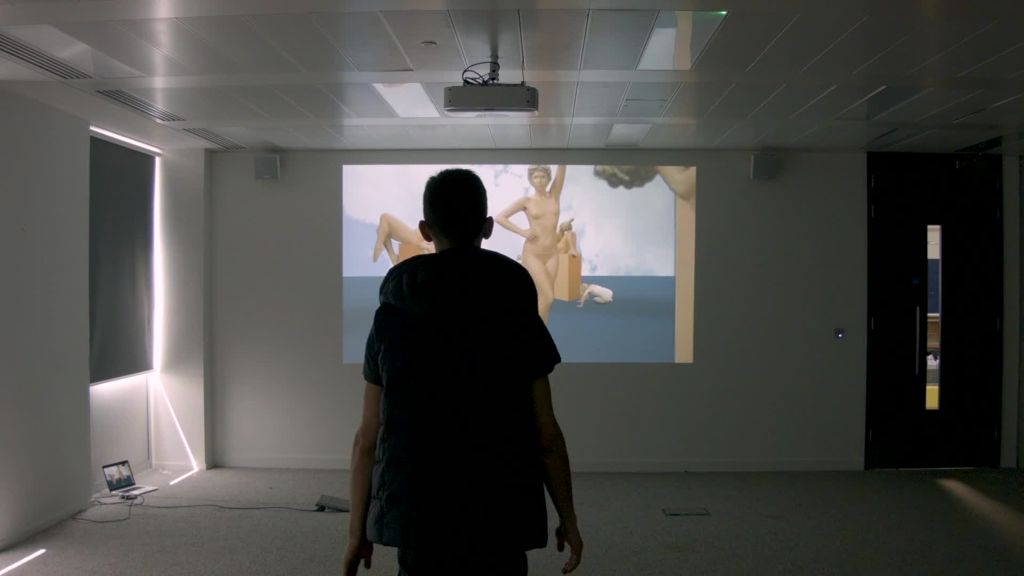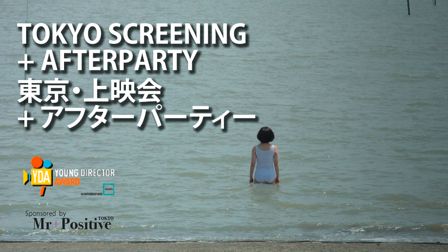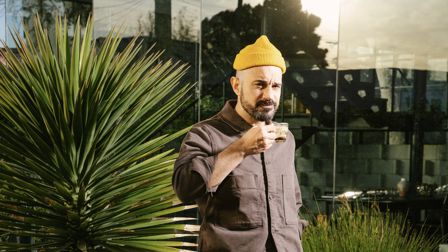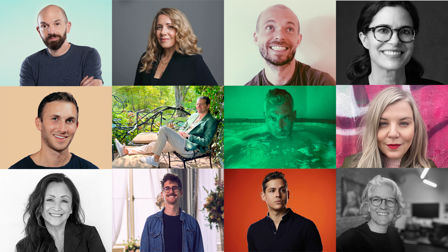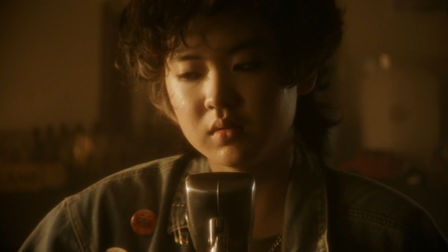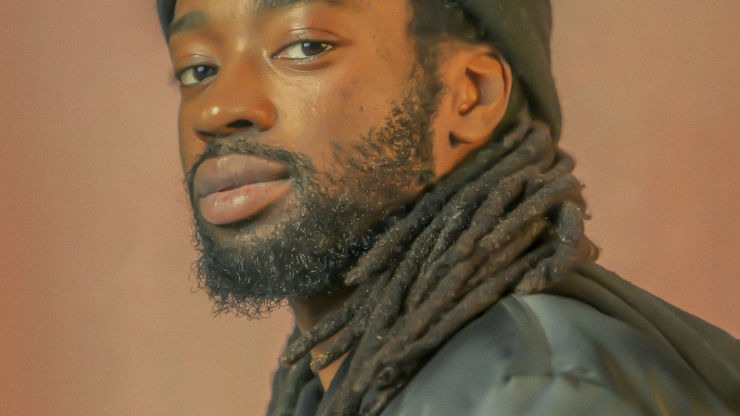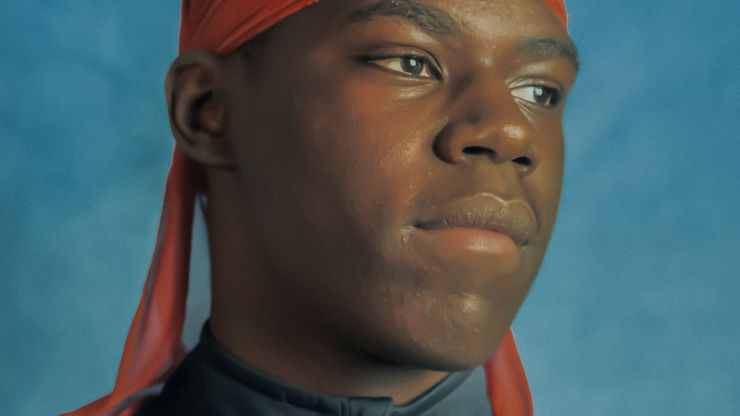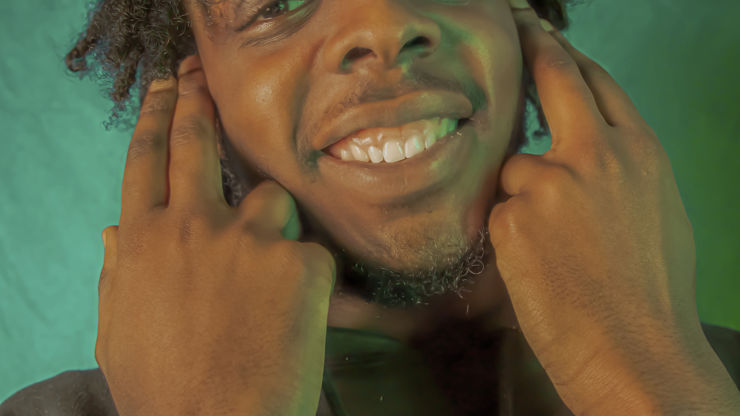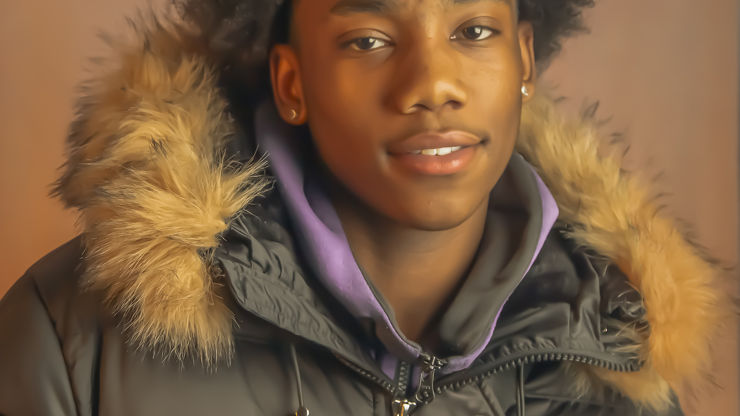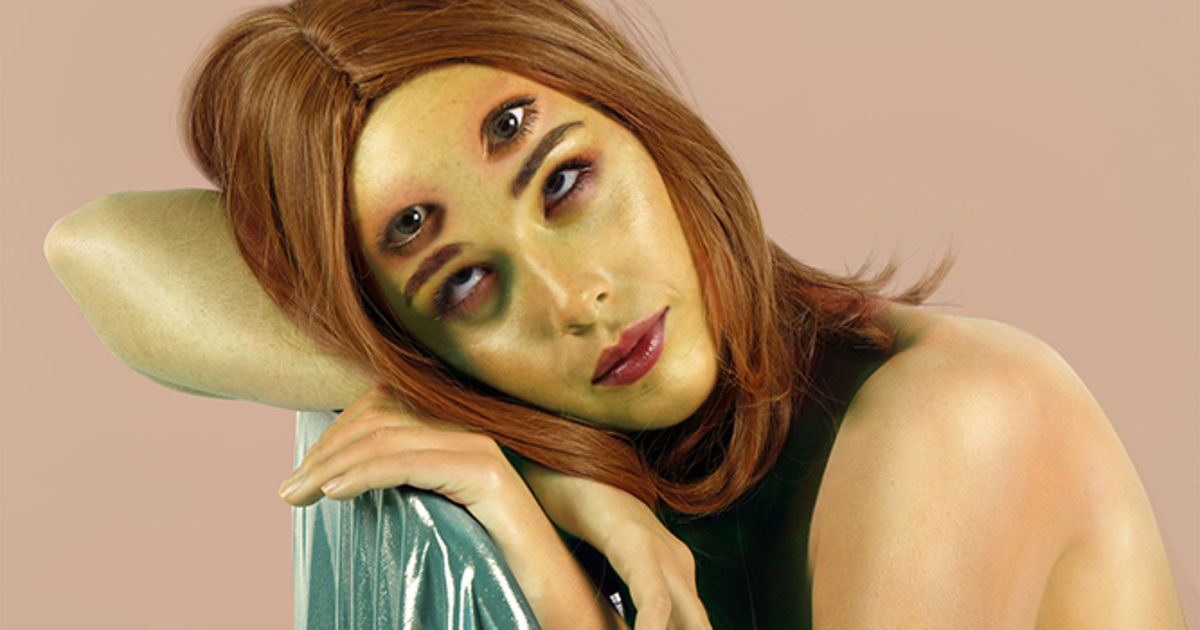Em Cole: Senses working overtime
Creating witty, stylised, social-ready morsels of moving image, inspired by weird and wonderful corners of the internet, Em Cole is very much the post-digital director. She’s also an impressive auto-didact, who’s achieved much in her 26 years. She tells Carol Cooper about Swindon, splosh and synaesthesia
Ask 1stAveMachine director Em Cole to explain her work and the studies that led to it and she’s animated.
Her hands, tipped by day-glo orange and lime green nails – flutter about as she recounts her adventures in aesthetics. Her gaze meets yours with bright, lively eyes – she’s as vibrant and colourful as her kooky creations.
Yet when I ask about her early days there’s a subtle change in her tone, she drops her gaze, her voice lowers. It’s almost as if she finds it a little awks to admit that she’s clearly rather clever.
“I was very academic at school,” she understates. She took four GCSEs early, ended up with “good A Levels and 16 GCSEs, all at… perfect grades.” She can’t quite fess up to straight As. She was expected to read English at Oxford. “I had to tell everyone I wanted to go to art school, for which you only need, like, one GCSE at C.”
Credits
powered by
- Director Em Cole
She’s taught herself Photoshop and other software; how to build and run a set, and shoot and edit a film. “It’s easy,” she claims. Well, yes, if you’re bit of a genius, which I come to believe she is.
I’m a design thinker, I like art with a question.
She hails from a “working class family in Swindon,” and did her art foundation year at college in the refined city of Bath – “I’d never seen so many posh, white people!” – taking the train there, returning in the evenings to Swindon to her night job on Sainsbury’s check out. “I liked looking at people’s food choices,” she recalls, betraying her characteristic curiosity.
Lotto – HulaHoop
Lotto – Pizza
Lotto – Laundry
Though she was good at drawing, she went on to study textile design – at Chelsea College of Art – rather than take fine art: “I’m a design thinker, I like art with a question, I like a brief that’s structured, I didn’t want to do fine art and be left to my own whims, I would just get lost in my head...”
She experimented with designing new materials: using fibreglass, or weaving conductive substances like copper into cloth for use in sports or wearable tech. One of her discoveries, however, was that she had no patience for long-form creation: “My friends were sitting there at these massive machines, weaving like old spinsters all fucking day – to make tiny patches of material! I just don’t work like that, I like instant gratification.”
We lead half our lives are in a digital space now, so the way we consume images and stories is different.
The sensuality in her work displays her love of hands-on experiences, for the feel of fabric and materials – something she wanted to translate into film and photography. During her degree she started “playing and exploring, cutting open fruits to find interesting colours, putting slime on my mate’s head and filming it.”
She is both a product of and a contributor to the short-attention-span, Millennial fragment-loving mind: “We lead half our lives are in a digital space now, so the way we consume images and stories is different. Think of all the different message threads we receive in a day. People read a bit then click on another tab and another tab. We don’t think in a linear way now, we think like the cloud.”
Credits
powered by
- Director Em Cole
She believes our ‘cloud’ brains means it makes sense for imagery to be shown in short forms and gifs: “It suits how we work now, especially from an advertising or commercial point of view, we have to match the way people communicate in order to get through to them.”
Her recent campaign for Instagram’s gift guide is just one example of her skilful manipulation of potent mini moments. She created six short vertical videos showcase products under popular hashtags, like #CATSOFINSTAGRAM, in which a fluffy feline sits in her boudoir, applying nail varnish to her paws.
I knew I wouldn’t be satisfied taking pics for ever so I started teaching myself more techy things, even just like making an image move in a smooth creepy way, playing with rotoscoping.
In Fingerboarding, skateboarding fingers model bling while navigating Escher like, eye-popping, op-art corridors. In the ASMR-themed #oddlysatisfying, lush blue toothpaste squeezes out in coils; a hand brushes furry fabric and squeezes creamy gloop; combs rustle through hair.
Her use of ASMR (autonomous sensory meridian response; the relaxing tingly feeling produced by videos of people whispering and/or creating sounds from mundane tasks) typifies her harnessing of unusual online phenomena.
Instagram – Fingerboarding
Instagram – Oddly Satisfying
While at art school she ended up moonlighting at a trend forecasting agency as a “culture sponge”, researching upcoming exhibitions and advances in science and tech: “You see everything that is going on; absorb it all and begin to see trends that are bubbling up. From that you create concepts and moodboards to sell onto fashion houses.”
The agency didn’t know she was only 19 and a student: “Eventually I had to say, ‘I can't work here anymore, I’m at uni; I’ve got a dissertation to do!’”
How do you persuade someone you’re capable of making a film unless you’ve already done it to show them?
After her degree she was approached by photography agents who’d seen work she was sharing on social. She took on commissions, did some editorials, such as for Italian sportswear brand LOTTO, but soon got frustrated. “I knew I wouldn’t be satisfied taking pics for ever so I started teaching myself more techy things, even just like making an image move in a smooth creepy way, playing with rotoscoping.”
Mercari – Closet
Meme Queen – Interactive Moving Image Installation
She could see there was a gap for her internet-ready films, but was struggling to make things happen with no connections or cash. “How do you persuade someone you’re capable of making a film unless you’ve already done it to show them?” She worried she was going to have to go back to school, but someone at the Royal College of Art who’d seen her BA showcase suggested she enrol on an MA in information experience design. “I had to blag my way through the course for a year without paying the fee up front, I come from Swindon, I didn’t have the money!”
I didn’t know what the fuck I was doing technically, but it didn’t matter, cos I could do stuff in Photoshop, make it look good afterwards.
She says the course was more philosophical than practical, about “how data and tech impacts how we communicate, everyone on it was from different backgrounds. It was awesome, quite overwhelming. Some people got lost, but I knew my goal. I specifically went there to apply interactivity to photography and film.”
Using the RCA’s resources she set about making films, finding her own teams and stylists, designing and building sets. “I didn’t know what the fuck I was doing technically, but it didn’t matter, cos I could do stuff in Photoshop, make it look good afterwards. I just dived in headfirst.”
Credits
powered by
- Director Em Cole
Paradoxically, she thinks a lack of training helped her: “If I’d been exposed to the industry, I don’t think I would have been so confident. You can just get freaked going on set as a newbie, with all the hierarchy. I went straight into my own sets, and my own shoots.” She says her first film, for creative duo Bompass & Parr, cost less than a grand and was “kind of made in a cupboard” using models and crew she found on social. It owes a lot to ASMR and also splosh parties.
The idea for my film was: if they made a splosh film, what would it look like?
When they started out, Bompass & Parr were purveyors of fine English jellies who wanted to do food experiences. “They’re amazing,” she enthuses, “they wear bow ties and are like something from Charlie and the Chocolate Factory.” They’d hoped they were going to get asked to cater for lavish events (which they do now) but initially they largely got requests for splosh parties – sexual fetish gatherings where people get off on rubbing food all over each other: “sitting in a bathtubs of baked beans etc,” she laughs. “They were mortified, so the idea for my film was: if they made a splosh film, what would it look like?”
What she ended up with is a lush, peachy confection of saucy jelly-based delights. It draws together her penchant for witty music, sensual sound affects and ‘soft’ aesthetics – which she describes as warm, enticing and feminine: an antidote to the often hard, macho visual styles she notices in gaming and some techy digital imagery.
Above: Pictures from Cole's personal project, photographing attendees of the Bollo Brook Youth Centre. Picture [L-R]: Joshua, Omar, Patrick, Fils, Will and Jerell.
The colour palette draws on a favourite of hers – orange. She likes it so much she can taste it. “I have synaesthesia, [a neurological condition in which information meant to stimulate one of your senses stimulates several],” she reveals, “I discovered it while researching at the trend forecasting agency. I’d had it my whole life and thought it was normal – it isn’t. When I see, or even just think about certain colours, it triggers my tastebuds and I start slobbering everywhere. There is a juicy orange that tastes coppery to me.”
There’s a green that sets her drooling too.
But there is more to her than sensory slobberings and slime experiments. She’s as interested in social welfare as she is in social media and regularly volunteers at a youth centre in Acton, west London, where she creates work with young people that are talented and driven but at risk of being left behind due to cuts and the rapid gentrification of the area. “They deserve to be valued and feel confident that they have a bright future.”
If anyone can motivate them to strive and shine, it’s the ever-inspiring, unstoppable Em Cole.
)
